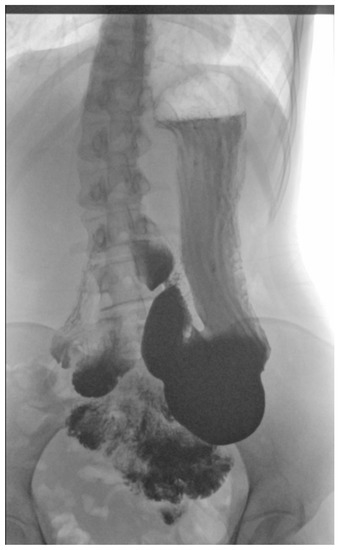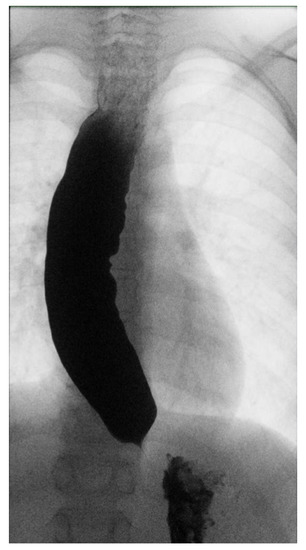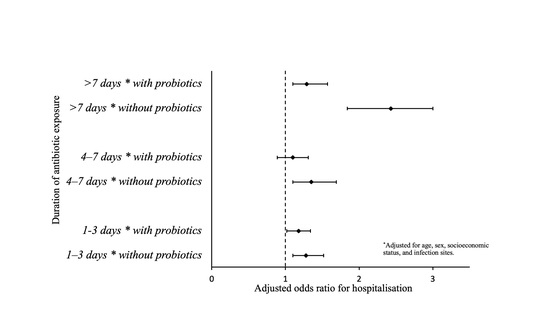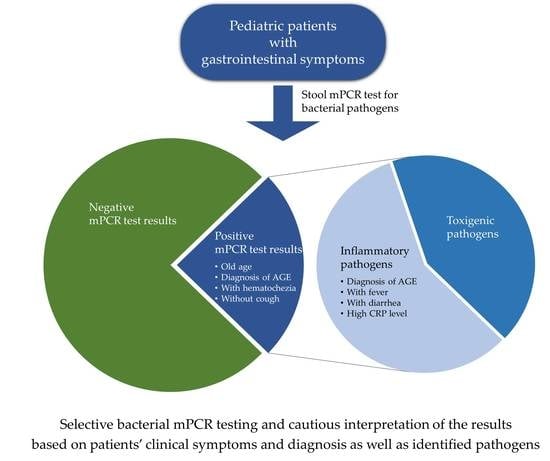Advances in Pediatric Digestive Diseases
A topical collection in Children (ISSN 2227-9067).
Viewed by 51334
Share This Topical Collection
Editor
 Prof. Dr. Sari A. Acra
Prof. Dr. Sari A. Acra
 Prof. Dr. Sari A. Acra
Prof. Dr. Sari A. Acra
E-Mail
Website
Collection Editor
D. Brent Polk Division of Gastroenterology, Hepatology, and Nutrition, Vanderbilt Children’s Hospital, 2200 Children’s Way, 9214 Doctors’ Office Tower, Nashville, TN 37232-9175, USA
Interests: diarrheal disorders; functional dyspepsia; GERD; aerodigestive disorders; inflammatory bowel diseases; nutritional disorder
Special Issues, Collections and Topics in MDPI journals
Topical Collection Information
Dear Colleagues,
Pediatric gastroenterology, hepatology, and nutrition are rapidly-evolving and diverse/complex disciplines. Our knowledge in several key areas has expanded exponentially over the last decade, including greater insight into the etiology and management of eosinophilic esophagitis and Inflammatory Bowel Disease, deciphering the role of the intestinal microbiome in health and disease, and insight into the epidemiology and management of the obesity epidemic engulfing us. While several challenges in these disciplines have been overcome, others remain open for debate and investigation. This collection in Children will act as a forum to discuss and promulgate knowledge about incompletely understood or controversial areas in the field of pediatric gastroenterology, hepatology, and nutrition. Both reviews and original research contributions will be considered for publication. Examples could include manuscripts that address the pathogenicity of C. difficile in infants, the role of patch testing in evaluating food allergens in eosinophilic esophagitis, among other timely but controversial topics.
I look forward to receiving your contributions!
Sari Acra, M.D., M.P.H.
Collection Editor
Manuscript Submission Information
Manuscripts should be submitted online at www.mdpi.com by registering and logging in to this website. Once you are registered, click here to go to the submission form. Manuscripts can be submitted until the deadline. All submissions that pass pre-check are peer-reviewed. Accepted papers will be published continuously in the journal (as soon as accepted) and will be listed together on the collection website. Research articles, review articles as well as short communications are invited. For planned papers, a title and short abstract (about 100 words) can be sent to the Editorial Office for announcement on this website.
Submitted manuscripts should not have been published previously, nor be under consideration for publication elsewhere (except conference proceedings papers). All manuscripts are thoroughly refereed through a single-blind peer-review process. A guide for authors and other relevant information for submission of manuscripts is available on the Instructions for Authors page. Children is an international peer-reviewed open access monthly journal published by MDPI.
Please visit the Instructions for Authors page before submitting a manuscript.
The Article Processing Charge (APC) for publication in this open access journal is 2400 CHF (Swiss Francs).
Submitted papers should be well formatted and use good English. Authors may use MDPI's
English editing service prior to publication or during author revisions.
Keywords
- eosinophilic esophagitis
- GERD
- inflammatory bowel disease/ IBD
- obesity
- abdominal pain
- constipation
- diarrhea
- c. difficile
- microbiome
- nutrition
- malnutrition
- hepatology
- hepatitis
- fatty liver disease
Published Papers (11 papers)
Open AccessCase Report
Postprandial Abdominal Pain Caused by Gastroptosis—A Case Report
by
Anna Staszewska, Anna Jarzumbek, Anna Saran, Sylwia Gierak-Firszt and Jaroslaw Kwiecien
Viewed by 2520
Abstract
Gastroptosis is a condition in which the stomach is displaced downward and is a condition affects the spontaneous muscle mobility in the stomach. The reason for its current prevalence remains unclear as the medical literature is scarce on the condition in children. In
[...] Read more.
Gastroptosis is a condition in which the stomach is displaced downward and is a condition affects the spontaneous muscle mobility in the stomach. The reason for its current prevalence remains unclear as the medical literature is scarce on the condition in children. In this study, we describe the case of a 17-year-old girl suffering from chronic, position-dependent epigastric pain. The symptoms were observed during post-meal activity, with a significant increase in pain intensity while in an upright position. An inferior stomach displacement was noted in an upper gastrointestinal X-ray study using barium.
Full article
►▼
Show Figures
Open AccessCase Report
Dysphagia in Children, Do Not Blame Eosinophils Too Quickly
by
Antoine Debourdeau, Jean-Michel Gonzalez, Marc Barthet and Véronique Vitton
Viewed by 1714
Abstract
Dysphagia in children is a relatively frequent symptom in childhood, and the main causes are congenital and linked to ear–nose–throat etiologies. However, non-congenital esophageal dysphagia is less common, and the main cause in such cases is eosinophilic esophagitis (EoE). When there is no
[...] Read more.
Dysphagia in children is a relatively frequent symptom in childhood, and the main causes are congenital and linked to ear–nose–throat etiologies. However, non-congenital esophageal dysphagia is less common, and the main cause in such cases is eosinophilic esophagitis (EoE). When there is no response to a well-conducted treatment, with normalization of histology, the diagnosis of EoE must then be reconsidered. Here, we present the case of a 10-year-old patient whose initial diagnosis of eosinophilic esophagitis delayed the diagnosis of type III achalasia.
Full article
►▼
Show Figures
Open AccessArticle
Is Recent Exposure to Antibiotics a Risk Factor for Hospitalisation in Korean Children with Acute Non-Bacterial Gastroenteritis? A Nationwide Population-Based Study
by
Dongbum Suh and Hyuksool Kwon
Viewed by 1448
Abstract
The purpose of this study was to evaluate the effect of recent antibiotic therapy and probiotics on hospitalisation in children with acute gastroenteritis. Using a retrospective study design, data from the population aged up to 18 years were collected from the Korean National
[...] Read more.
The purpose of this study was to evaluate the effect of recent antibiotic therapy and probiotics on hospitalisation in children with acute gastroenteritis. Using a retrospective study design, data from the population aged up to 18 years were collected from the Korean National Health Insurance Service-National Sample Cohort. The duration of antibiotic therapy within 14 days of the index visit, prescription of probiotics at initial presentation, the effect size of antibiotic exposure on hospitalisation, and its modification by probiotics were assessed. Of 275,395 patients with acute gastroenteritis, 51,008 (18.5%) had prior exposure to antibiotics. Hospitalisation within 7 days of the index visit was positively associated with exposure to antibiotics (
p-trend < 0.001). The prescription of probiotics (as a main effect; odds ratio, 0.80; 95% confidence interval 0.72–0.87) was associated with a decreased risk of hospitalisation. Prior exposure to antibiotics might be a significant risk factor for hospitalisation in children presenting with acute gastroenteritis. This may be favourably modified by administering probiotics at the initial presentation.
Full article
►▼
Show Figures
Open AccessArticle
Application of a Multiplex Polymerase Chain Reaction Test for Diagnosing Bacterial Enteritis in Children in a Real-Life Clinical Setting
by
Hyun-Woo Lee, Seung-Beom Han and Jung-Woo Rhim
Cited by 1 | Viewed by 1814
Abstract
This study aimed to determine the subjects for bacterial multiplex polymerase chain reaction (mPCR) testing and to interpret the mPCR test results based on patients’ clinical symptoms and diagnoses. The medical records of 710 pediatric patients who underwent a bacterial mPCR test were
[...] Read more.
This study aimed to determine the subjects for bacterial multiplex polymerase chain reaction (mPCR) testing and to interpret the mPCR test results based on patients’ clinical symptoms and diagnoses. The medical records of 710 pediatric patients who underwent a bacterial mPCR test were retrospectively reviewed. Clinical characteristics and mPCR test results were compared between patients with positive (
n = 199) and negative mPCR test results (
n = 511) and between patients with invasive pathogens (
n = 95) and toxigenic pathogens (
n = 70). Positive mPCR test results were significantly associated with older age (
p < 0.001), diagnosis of acute gastroenteritis (
p = 0.021), presence of hematochezia (
p < 0.001), and absence of cough (
p = 0.004). The diagnosis of acute gastroenteritis (
p = 0.003), presence of fever (
p = 0.027) and diarrhea (
p = 0.043), and higher C-reactive protein levels (
p = 0.025) were significantly associated with the identification of invasive pathogens in patients with positive mPCR test results. Thus, selective bacterial mPCR testing should be performed based on the patients’ clinical symptoms and diagnoses, and the results should be interpreted in consideration with identified pathogens.
Full article
►▼
Show Figures
Open AccessCase Report
Large Splenic Abscess Caused by Non-Typhoidal Salmonella in a Healthy Child Treated with Percutaneous Drainage
by
Hyun Woo Lee and Seung Beom Han
Cited by 3 | Viewed by 3020
Abstract
Splenic abscess occurs very rarely in healthy children. Although typhoid fever was the leading cause of splenic abscess in the pre-antibiotic era,
Salmonella spp. remain to be the major pathogens causing splenic abscess, with an increasing worldwide frequency of splenic abscess due to
[...] Read more.
Splenic abscess occurs very rarely in healthy children. Although typhoid fever was the leading cause of splenic abscess in the pre-antibiotic era,
Salmonella spp. remain to be the major pathogens causing splenic abscess, with an increasing worldwide frequency of splenic abscess due to non-typhoidal
Salmonella infection. Here, we report the case of a 12-year-old boy, who was presumably diagnosed with acute gastroenteritis on admission and eventually diagnosed with a large splenic abscess (maximum diameter, 14.5 cm) caused by non-typhoidal
Salmonella. Although splenectomy has been considered in cases of large splenic abscesses, the patient was treated with antibiotics and ultrasonography-guided percutaneous drainage. A detailed physical examination and appropriate imaging studies are necessary for the early diagnosis of extra-intestinal complications of non-typhoidal
Salmonella enteritis. For treatment, percutaneous drainage, rather than splenectomy, can be used in large splenic abscesses.
Full article
►▼
Show Figures
Open AccessReview
Functional Nausea in Children: A Review of the Literature and Need for Diagnostic Criteria
by
Alexandra C. Russell, Amanda L. Stone and Lynn S. Walker
Cited by 17 | Viewed by 6245
Abstract
Nausea is common amongst children with functional gastrointestinal disorders and is associated with a high burden of somatic and psychosocial comorbidities in both the short and long-term. Current treatments including medications, phytotherapy, stress-reduction techniques, and gastric electrical stimulation for recalcitrant cases, are reviewed.
[...] Read more.
Nausea is common amongst children with functional gastrointestinal disorders and is associated with a high burden of somatic and psychosocial comorbidities in both the short and long-term. Current treatments including medications, phytotherapy, stress-reduction techniques, and gastric electrical stimulation for recalcitrant cases, are reviewed. Functional nausea merits its own diagnostic criteria as a pediatric functional gastrointestinal disorder.
Full article
Open AccessArticle
Young Age at Diagnosis of Type 1 Diabetes Is Associated with the Development of Celiac Disease—Associated Antibodies in Children Living in Newfoundland and Labrador, Canada
by
Harpreet Pall, Leigh A. Newhook, Hillary Aaron, Joseph Curtis and Ed Randell
Cited by 5 | Viewed by 5188
Abstract
Objectives: The objectives of this study were to establish the prevalence of positive antibodies to endomysium (EMA) and tissue transglutaminase (tTG) in children with type 1 diabetes living in Newfoundland and Labrador (NL), and to examine clinical features associated with positive antibodies. Methods:
[...] Read more.
Objectives: The objectives of this study were to establish the prevalence of positive antibodies to endomysium (EMA) and tissue transglutaminase (tTG) in children with type 1 diabetes living in Newfoundland and Labrador (NL), and to examine clinical features associated with positive antibodies. Methods: Patients were recruited from the pediatric diabetes clinic. One hundred sixty-seven children with type 1 diabetes from the 280 children followed at the clinic were prospectively screened for celiac disease using EMA and tTG. The variables of Irish descent, age at onset of diabetes, duration of diabetes, sex, family history of celiac disease, hemoglobin A1C (A1C), ferritin, gastrointestinal symptoms, and body mass index were compiled for all patients. The group of patients with positive antibodies to EMA and/or tTG was compared to the group with negative antibodies. Results: The prevalence of patients with positive antibodies to EMA and/or tTG was 16.8% (
n = 28). One patient had also been previously diagnosed with symptomatic celiac disease. The two statistically significant variables with positive antibodies were an earlier age at onset of diabetes (Mann-Whitney U two-tailed test: mean difference 3.2 years, 95% CI 1.7–4.8 years,
p < 0.0001) and longer duration of diabetes (Mann-Whitney U two-tailed test: mean difference 2.9 years, 95% CI 1.3–4.4 years,
p < 0.0001). Irish descent was associated with positive antibodies but did not reach statistical significance. On logistic regression analysis performed with these three variables together, only age at onset of diabetes remained significant. Conclusions: There is a high prevalence of celiac disease-associated antibodies in children living in NL with type 1 diabetes. Unlike other clinical features, an earlier age at onset of diabetes was predictive for positive antibodies. As the majority of children with positive antibodies did not have signs or symptoms of celiac disease, routine screening for celiac disease in type 1 diabetes is recommended.
Full article
Open AccessReview
Controversies in the Mechanism of Total Parenteral Nutrition Induced Pathology
by
Jain Ajay Kumar and Jeffery H. Teckman
Cited by 21 | Viewed by 7521
Abstract
Over 30,000 patients are permanently dependent on Total Parenteral Nutrition (TPN) for survival with several folds higher requiring TPN for a prolonged duration. Unfortunately, it can cause potentially fatal complications. TPN infusion results in impairment of gut mucosal integrity, enhanced inflammation, increased cytokine
[...] Read more.
Over 30,000 patients are permanently dependent on Total Parenteral Nutrition (TPN) for survival with several folds higher requiring TPN for a prolonged duration. Unfortunately, it can cause potentially fatal complications. TPN infusion results in impairment of gut mucosal integrity, enhanced inflammation, increased cytokine expression and trans-mucosal bacterial permeation. It also causes endotoxin associated down regulation of bile acid transporters and Parenteral Nutrition Associated Liver Disease (PNALD), which includes steatosis, disrupted glucose metabolism, disrupted lipid metabolism, cholestasis and liver failure. Despite multiple theories, its etiology and pathophysiology remains elusive and is likely multifactorial. An important cause for TPN related pathologies appears to be a disruption in the normal enterohepatic circulation due to a lack of feeding during such therapy. This is further validated by the fact that in clinical settings, once cholestasis sets in, its reversal occurs when a patient is receiving a major portion of calories enterally. There are several other postulated mechanisms including gut bacterial permeation predisposing to endotoxin associated down regulation of bile acid transporters. An additional potential mechanism includes toxicity of the TPN solution itself, such as lipid mediated hepatic toxicity. Prematurity, leading to a poor development of bile acid regulating nuclear receptors and transporters has also been implicated as a causative factor. This review presents the current controversies and research into mechanisms of TPN associated injury.
Full article
Open AccessArticle
Impact of Pre-Procedure Interventions on No-Show Rate in Pediatric Endoscopy
by
Jyoti Mani, Linda Franklin and Harpreet Pall
Cited by 13 | Viewed by 8256
Abstract
Pediatric endoscopy has evolved into an indispensable tool in the diagnosis and management of gastrointestinal diseases in children. However, there is limited literature focusing on quality improvement initiatives in pediatric endoscopy. The primary goal of this project was to reduce the no-show rate
[...] Read more.
Pediatric endoscopy has evolved into an indispensable tool in the diagnosis and management of gastrointestinal diseases in children. However, there is limited literature focusing on quality improvement initiatives in pediatric endoscopy. The primary goal of this project was to reduce the no-show rate in the pediatric endoscopy unit. Also, we aimed to improve patient and family satisfaction with the procedure by identifying opportunities for improvement. A checklist was designed based on the potential causes of no-show. The endoscopy nurse coordinator reviewed the checklist when scheduling the procedure to identify patients at high risk for non-compliance. Once a risk factor was identified, appropriate actions were taken. She also made a pre-procedure phone call as a reminder and to address any of these risks for non-compliance if present. A patient satisfaction survey was used to identify potential areas for improvement. The no-show rate decreased from an average of 7% in the pre-intervention phase to 2% in the post-intervention phase (
p = 0.009). 91% of the patients/family recorded an overall satisfaction of 4 or 5 on a scale of 1–5 5 being best). Quality improvement strategies decreased the no-show rate in the pediatric endoscopy unit. A patient satisfaction survey helped in identifying areas for improvement.
Full article
►▼
Show Figures
Open AccessReview
Controversies Surrounding Clostridium difficile Infection in Infants and Young Children
by
Maribeth R. Nicholson, Isaac P. Thomsen and Kathryn M. Edwards
Cited by 10 | Viewed by 5902
Abstract
Clostridium difficile is a frequent cause of antibiotic-associated diarrhea in adults and older children. However, as many as 80% of infants can be asymptomatically colonized. The reasons for this have not been well established but are believed to be due to differences in
[...] Read more.
Clostridium difficile is a frequent cause of antibiotic-associated diarrhea in adults and older children. However, as many as 80% of infants can be asymptomatically colonized. The reasons for this have not been well established but are believed to be due to differences in toxin receptors or toxin internalization. Determining which children who test positive for
C. difficile warrant treatment is exceedingly difficult, especially in the setting of increased rates of detection and the rising risk of disease in children lacking classic risk factors for
C. difficile.
Full article
Open AccessReview
Artificial Sweetened Beverages and Pediatric Obesity: The Controversy Continues
by
Peter N Freswick
Cited by 4 | Viewed by 6242
Abstract
The pediatric obesity epidemic has gathered public and political interest recently. People often choose “diet” or artificial sweetened beverages (ASB) to combat this epidemic, but the obesity incidence continues to rise. First, I review the pediatric studies on the effect of ASB consumption
[...] Read more.
The pediatric obesity epidemic has gathered public and political interest recently. People often choose “diet” or artificial sweetened beverages (ASB) to combat this epidemic, but the obesity incidence continues to rise. First, I review the pediatric studies on the effect of ASB consumption with subsequent food intake. Next, I present pediatric studies of chronic ASB consumption and weight change. Some epidemiologic pediatric studies have supported an association between artificial sweetener use and increased BMI but cannot prove causation. Randomized control trials have provided some evidence of weight loss with ASB ingestion among children, but study limitations may minimize these conclusions. Finally, I summarize the possible mechanisms that may drive potential effects of artificial sweeteners.
Full article












